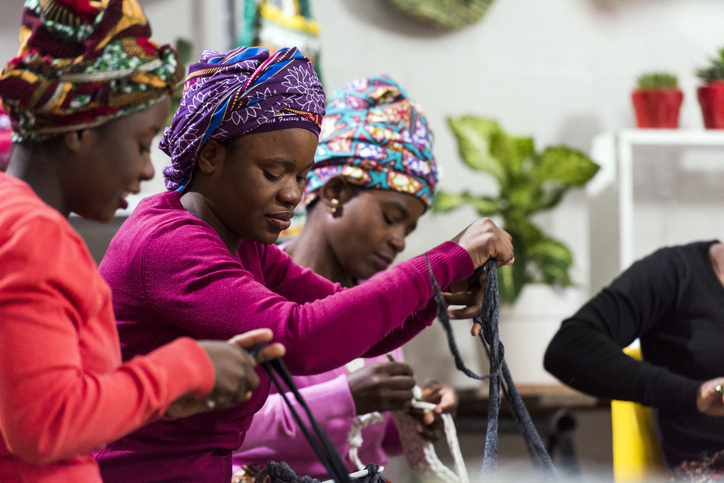How does a substantial improvement in labor market opportunities for women affect their bargaining power within the household? This column reports evidence from Myanmar, which shows that the country’s opening to trade from 2010 and the growing availability of jobs in export factories for women reduced the prevalence of domestic violence.
Events in recent years have drawn attention to the serious challenges facing women in the labor market, including sexual harassment and unequal pay. But there is considerably less recognition of the threats to both the safety and equality of women in their own households.
The World Health Organization estimates that among all women who have ever been in a relationship, 30% have experienced domestic violence. One study, analyzing data from the Demographic and Health Surveys, which are conducted across the globe, shows that married women often have no say in household decisions. According to these surveys, the belief that husbands are justified for beating their wives is not uncommon. Most of these problems are worse in low-income countries.
In these contexts, what can protect and empower women in the household? There is considerable research evidence showing that cash transfers, vocational training and information, and savings instruments can improve various measures of female empowerment.
In addition, economic analysis of bargaining within households highlight the importance of a woman’s ‘outside option’ – what she would be able to do outside her current marriage. An important part of this outside option is the availability and quality of labor market opportunities for women.
Developing countries have seen drastic changes in women’s labor market opportunities over the past few decades. Industrialization and globalization have generated large increases in the number of manufacturing jobs done by women, especially at exporting firms.
This is important because exporting firms often pay higher wages and offer better working conditions than firms that sell domestically. In other words, many women have seen drastic improvements in the job opportunities available to them as a result of these broader changes in the global economy.
What happens to the women at home when their labor market opportunities improve? Do they have more say in household decisions? Do they experience less domestic violence? We address these questions in a recent study in Myanmar.
Myanmar began rapidly opening up to trade around 2010. The country’s garment factories, which rely on mostly women workers, were those most affected by this trade liberalization. Previous work shows that wages increased and working conditions improved among garment firms that started exporting during Myanmar’s rapid trade expansion. This provides an excellent setting in which to study how a sudden and dramatic change in labor market opportunities affected the bargaining power of women in the household.
Focusing on women in garment factory neighborhoods in the Yangon region, we find that women living near a factory producing for the export market (rather than a non-exporting factory) are more likely to be working. This is despite the fact that both groups of women are similar across a number of dimensions, including their age, education levels, and marital status. We conduct various analyses which suggest that this relationship is not just correlation, and that export factories actually improve the labor market opportunities of these women.
Proximity to a factory that exports (as opposed to a factory that does not export) increases women’s involvement in household decisions. It also reduces women’s tolerance of domestic violence, measured by the number of situations in which they think it is justifiable for a husband to beat his wife. Importantly, proximity to an exporting firm also reduces the likelihood that a woman is a victim of domestic violence.
Our study provides evidence that exporting firms translate into better quality labor market opportunities for women, and this is what improves their bargaining power in the household – even for women who do not end up working at these export factories.
A woman who lives in a neighborhood where good quality jobs are available for her has a better ‘outside option’, and there is a great deal of economic research showing that a better outside option translates into more bargaining power. This could happen through changes in a woman’s perception of herself (and therefore her behavior), a husband’s perception of his wife (and therefore his behavior), or a combination of the two.
These results are consistent with research in Mexico and Bangladesh, where researchers show that improved labor market opportunities improve various measures of women’s empowerment, including a bigger role in household decision-making, delayed marriage, and delayed childbirth.
But the finding that better jobs can reduce the risk of domestic violence is more novel, especially in the context of a developing country. Most research in development economics on domestic violence has focused on cash transfers, which are often part of programs that are of a smaller scale than the labor market changes that we study.
At a time when anti-globalization sentiment appears to be on the rise, it is worth noting that the improvement in labor market conditions in our study of Myanmar were driven by trade liberalization. Improving women’s labor market conditions could be an important tool to reduce domestic violence in developing countries, and globalization – though undoubtedly a controversial topic – may have already contributed to substantial improvements in this domain.







